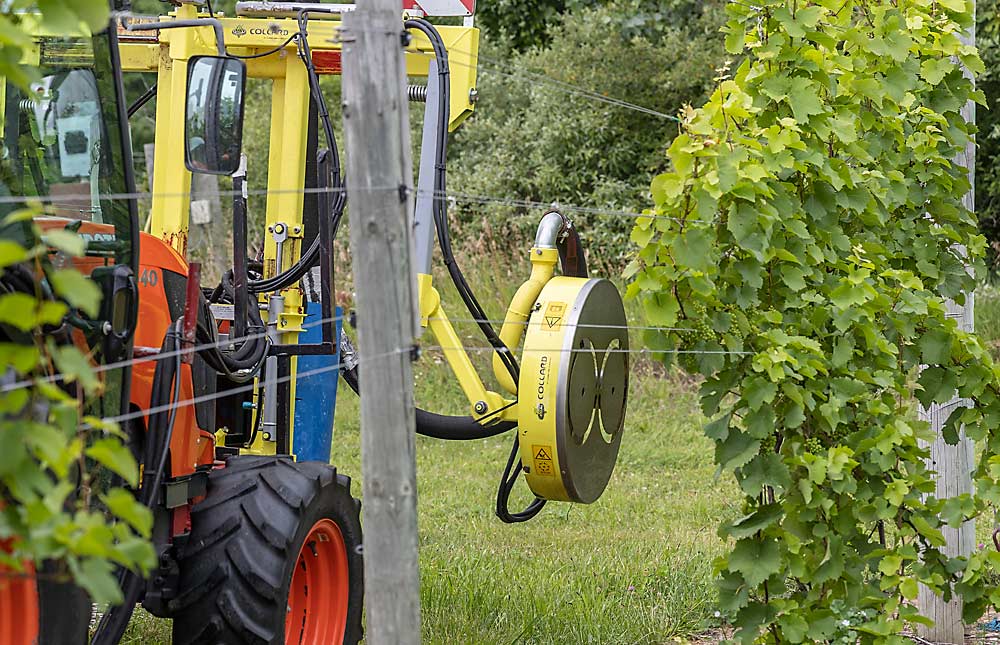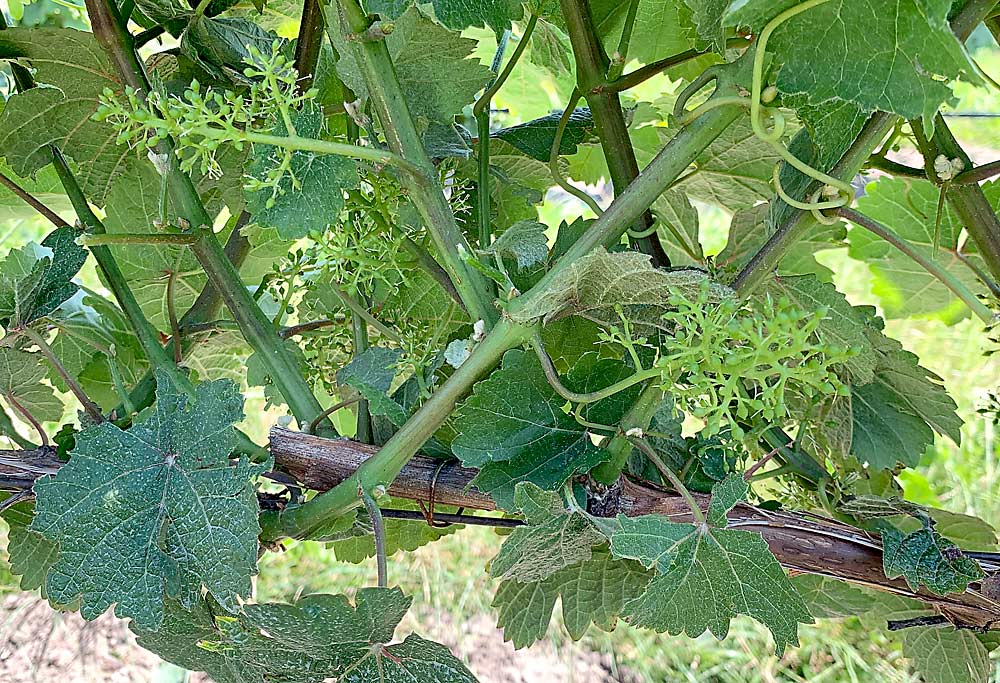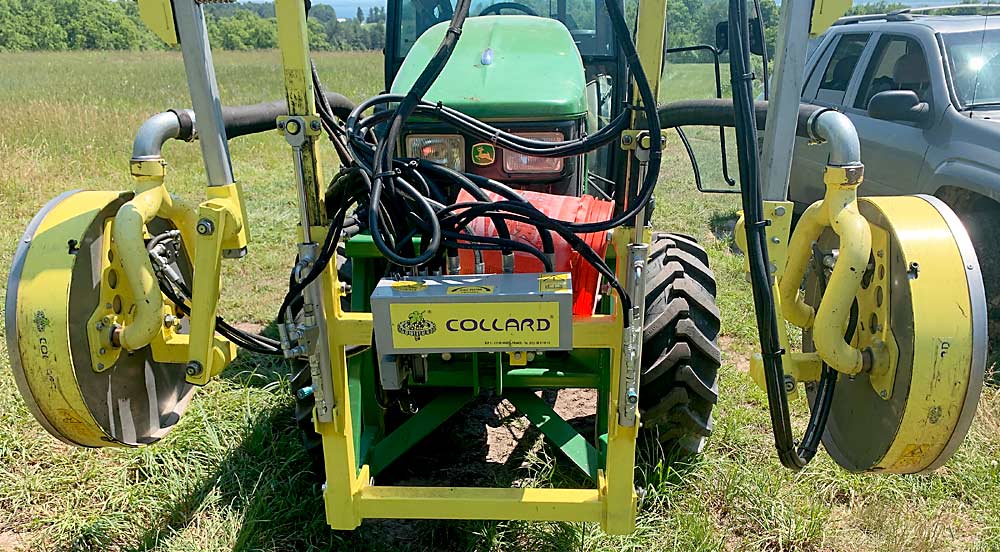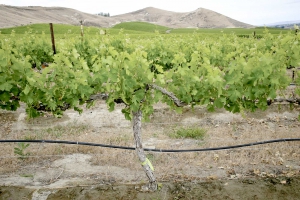
Michigan State University viticulture professor Paolo Sabbatini knows early leaf removal is an effective way to manage cluster rot, and he knows why: better drying. His decade of research on the topic has altered the management practices of many Michigan wine grape growers.
His work has also shown that early leaf removal can improve fruit quality, but he hasn’t confirmed why. In 2020, he received a $500,000 grant from the U.S. Department of Agriculture’s National Institute of Food and Agriculture to figure it out. The three-year project will run through 2023. Sabbatini’s co-investigator is MSU agricultural engineering professor Ilce Medina Meza.
In early leaf removal, leaves are removed from around the grape cluster during bloom, as opposed to the more traditional approach to canopy management, when leaves are removed just before or during veraison. Removing leaves during bloom leads to earlier and greater light penetration. It also stresses the vines, which reduces fruit set. The clusters loosen up and dry faster, making them more resistant to rot, Sabbatini said.

Grapes in cool-climate growing regions such as Michigan tend to ripen in very compact clusters. This can be a problem if, as in Michigan, it’s also very humid. Tight clusters and humidity can exacerbate cluster rot, he said.
Early leaf removal is a fairly common practice for reducing rot in cool-climate wine regions, but Sabbatini’s team is the first to study its effects on fruit quality. The NIFA project is studying the role that light and stress in the early stages of berry formation might play in improving fruit quality, he said.
Glen Greiffendorf, winemaker at 12 Corners Vineyards in Benton Harbor, Michigan, said Sabbatini’s research changed his winery’s canopy management techniques. They used to remove leaves “the old-fashioned way” — by hand near veraison. Now they use machines to remove leaves during bloom for greater sunlight and wind exposure, to keep the grapes dry, he said.
Josh Vander Weide was a doctoral student in Sabbatini’s lab when the early leaf removal technique was being refined. His doctoral work focused on mechanizing the practice to reduce its time and cost.
Vander Weide studied the Collard Early Leaf Remover, now widely adopted by Michigan growers. The machine, attached to a tractor, moves through vineyard rows and uses air compressors to shred leaves in the fruit zone near bloom. His work focused on two cultivars, Pinot Grigio and Merlot, comparing hand and machine removal for both.
Vander Weide found that the machine improved fruit quality more than removing leaves by hand for both varieties, which was somewhat of a surprise because mechanization of management practices in vineyards typically does not produce better results than performing them by hand, he said.

Now a postdoctoral researcher at the University of British Columbia, Vander Weide is not participating in Sabbatini’s NIFA-funded project studying fruit quality, but he thinks the quality differences found between early hand and early machine removal have something to do with how much of the leaf is removed. The air compressor machine shreds and removes the outer half of leaves in the bottom 50 percent of the canopy. Hand pulling typically removes whole leaves that just cover the fruit. Both approaches remove roughly the same overall leaf area, but the machine allows similar or greater sunlight penetration to the fruit zone while leaving more leaves in place to photosynthesize and contribute sugar to the fruit — the “best of both worlds,” he said.
Greiffendorf said more Michigan wine grape growers are relying on mechanical leaf removal these days, which is faster and more efficient than hand removal. He does follow up machine removal with a hand touch-up, however, picking off whatever stray leaves the machine might have missed.
—by Matt Milkovich







Leave A Comment